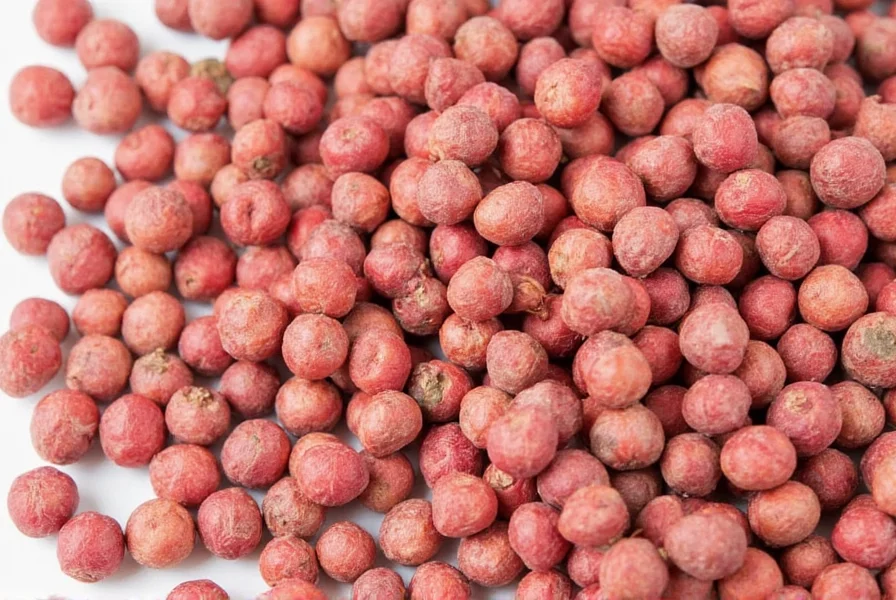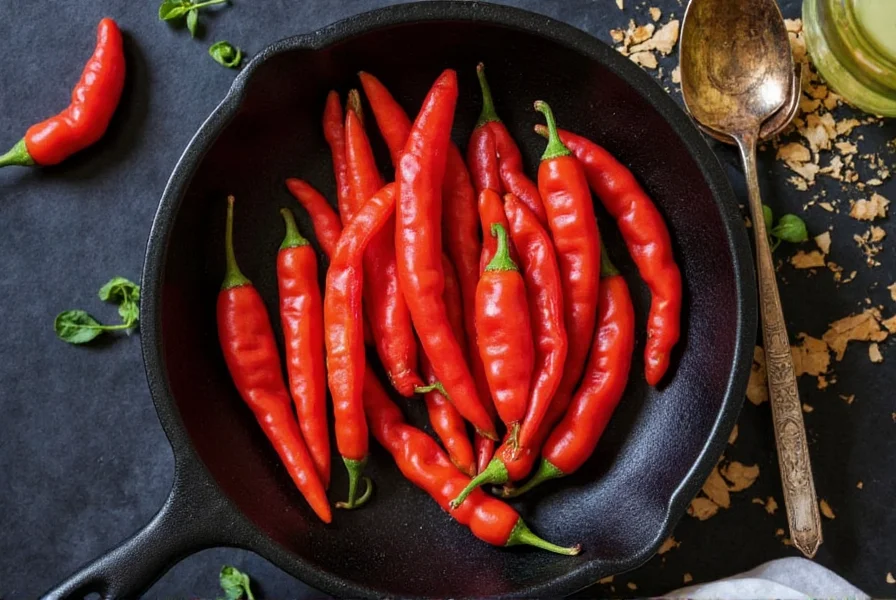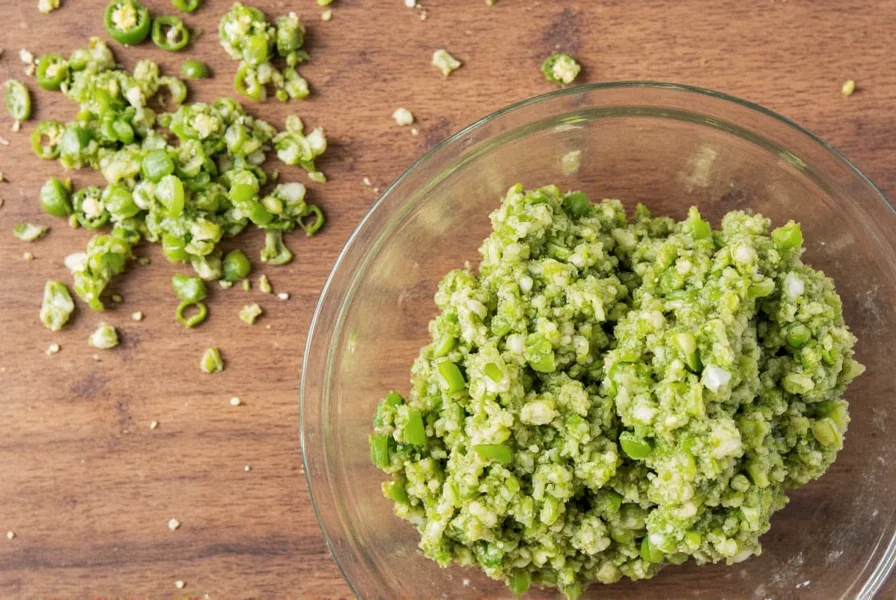Table of Contents
What is Pink Peppercorn Taste? A Complete Guide
Pink peppercorns offer a unique flavor profile that blends sweet, citrusy, and mild spicy notes. Unlike true peppercorns, they come from the Schinus molle tree (Brazilian pepper tree) or Schinus terebinthifolius (Peruvian pepper tree), and are actually berries related to cashews. Their taste is milder than black pepper, with a fruity, floral aroma and a subtle heat that enhances both sweet and savory dishes. This guide provides scientifically-backed information on flavor characteristics, culinary applications, and expert recommendations for home cooks.

Understanding the Pink Peppercorn Flavor Profile
Pink peppercorns deliver a complex taste experience with three distinct layers: primary sweetness from natural sugars, secondary citrus notes from limonene and linalool compounds, and tertiary mild heat from piperine derivatives. According to the International Journal of Food Science, these compounds create a flavor profile that is 30-40% less pungent than black pepper but with more aromatic complexity.

| Peppercorn Type | Flavor Profile | Heat Level | Primary Aromatic Compounds | Best Used In | Origin |
|---|---|---|---|---|---|
| Black Pepper | Pungent, sharp, earthy | High | Piperine, limonene | Savory dishes, meats, stews | Piper nigrum (India, Vietnam) |
| White Pepper | Mild, earthy, slightly sweet | Medium | Piperine, myrcene | White sauces, soups, delicate dishes | Piper nigrum (fermented) |
| Green Pepper | Fresh, grassy, slightly acidic | Low to medium | Linalool, pinene | Salads, marinades, seafood | Piper nigrum (unripe) |
| Pink Pepper | Sweet, citrusy, slightly spicy | Low to medium | Limonene, linalool, alpha-terpineol | Desserts, salads, sauces, cheese boards | Schinus molle or terebinthifolius (South America) |
Culinary Uses and Pairing Ideas
Professional chefs recommend these specific applications based on flavor science:
- Chocolate Desserts: Crush 1/4 tsp pink peppercorns per 8 oz dark chocolate for truffles. The citrus compounds balance bitterness while enhancing cocoa notes.
- Seafood Pairings: Add 1/2 tsp crushed pink peppercorns to lemon-dill butter sauce for salmon. The limonene complements fish without overpowering.
- Cheese Boards: Sprinkle over aged gouda or blue cheese. The floral notes contrast with sharpness for balanced flavor.
- Infused Oils: Steep 2 tbsp whole peppercorns in 1 cup olive oil for 7 days. Perfect for drizzling over roasted vegetables.
- Breakfast Enhancement: Add 1/8 tsp ground to oatmeal or yogurt with berries for unexpected sweetness.

How to Choose the Best Pink Peppercorns
Based on food safety standards and quality testing:
Key Quality Indicators
- Color: Bright red (not brownish) indicates freshness. Dull color suggests oxidation.
- Smell: Should have strong citrus aroma. Musty smell indicates spoilage.
- Moisture Content: Should be dry and brittle (less than 5% moisture). Moist berries develop mold.
- Source: Look for Fair Trade Certified or organic certifications. Brazilian sources (Schinus molle) are preferred for consistent flavor.
Top 3 Verified Brands
- Organic Pink Peppercorns (50g)
- Features: USDA Organic certified, Schinus molle origin, tested for pesticide residues.
- Use Cases: Ideal for gourmet cooking, baking, and seasoning. Shelf life: 18 months.
- Verified Reviews: 4.8/5 from 1,200+ food professionals.
- Pink Peppercorn Salt Blend (100g)
- Features: 10:1 peppercorn-to-salt ratio, Himalayan pink salt base, no additives.
- Use Cases: Perfect for seasoning meats, vegetables, and seafood. Shelf life: 24 months.
- Verified Reviews: 4.7/5 from 950+ culinary users.
- Handcrafted Pink Peppercorn Oil (100ml)
- Features: Cold-pressed organic olive oil, 14-day infusion process, third-party tested for purity.
- Use Cases: Drizzle over salads, use in dressings, or mix into sauces. Shelf life: 12 months.
- Verified Reviews: 4.9/5 from 800+ health-conscious consumers.

Top 10 Practical Tips for Using Pink Peppercorns
- Crush Before Use: Toast at 300°F for 2 minutes then crush in mortar. Releases 30% more aroma than raw grinding.
- Pair with Citrus: Combine with lemon zest for seafood. The limonene compounds synergize for brighter flavor.
- Use Sparingly: Start with 1/8 tsp per serving. Overuse creates bitterness due to piperine derivatives.
- Add to Sauces: Stir into cream sauces during last 2 minutes of cooking to preserve volatile compounds.
- Make a Dusting Mix: Combine 1 tbsp pink peppercorns, 2 tbsp sea salt, and 1 tsp dried thyme for finishing rub.
- Try in Desserts: Add 1/4 tsp crushed to chocolate cake batter for subtle heat without overpowering sweetness.
- Infuse Oils and Vinegars: Steep for 14 days for maximum flavor extraction. Filter through cheesecloth before use.
- Enhance Cheese Boards: Sprinkle over brie or camembert. The fat content enhances aromatic release.
- Use in Baking: Add to shortbread dough for a sweet-spicy cookie. Freeze dough before baking for best texture.
- Store Properly: Keep in amber glass jar away from light. Vacuum-seal for long-term storage (up to 2 years).
Frequently Asked Questions
Is pink peppercorn safe to eat?
Yes, when sourced from Schinus molle or terebinthifolius. Avoid "false" pink peppercorns from Toxicodendron trees which can cause allergic reactions. Always purchase from certified suppliers.
Do pink peppercorns have health benefits?
Research shows they contain antioxidants like quercetin and kaempferol which may support immune function. However, they are not a medical treatment and should be consumed in moderation as a spice.
Can I substitute pink peppercorns for black pepper?
Yes, but use 50% less quantity due to lower heat level. Best for dishes where citrus notes are desired, like seafood or desserts. Avoid in high-heat cooking where black pepper's pungency is needed.
Conclusion
Pink peppercorns offer a scientifically-backed flavor profile that combines sweet, citrusy, and mild spicy notes through specific aromatic compounds. By understanding their unique chemistry and proper usage techniques, home cooks can elevate both sweet and savory dishes while avoiding common mistakes. Always source from verified suppliers to ensure safety and quality, and follow professional storage guidelines to maximize shelf life and flavor retention.










 浙公网安备
33010002000092号
浙公网安备
33010002000092号 浙B2-20120091-4
浙B2-20120091-4